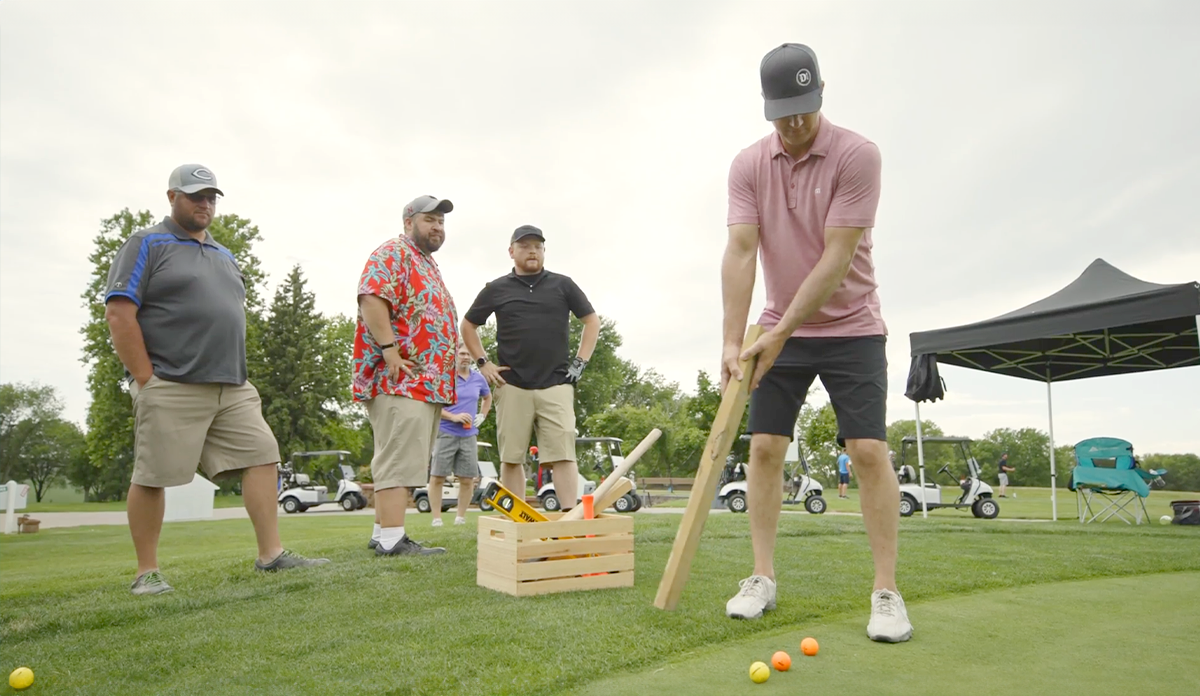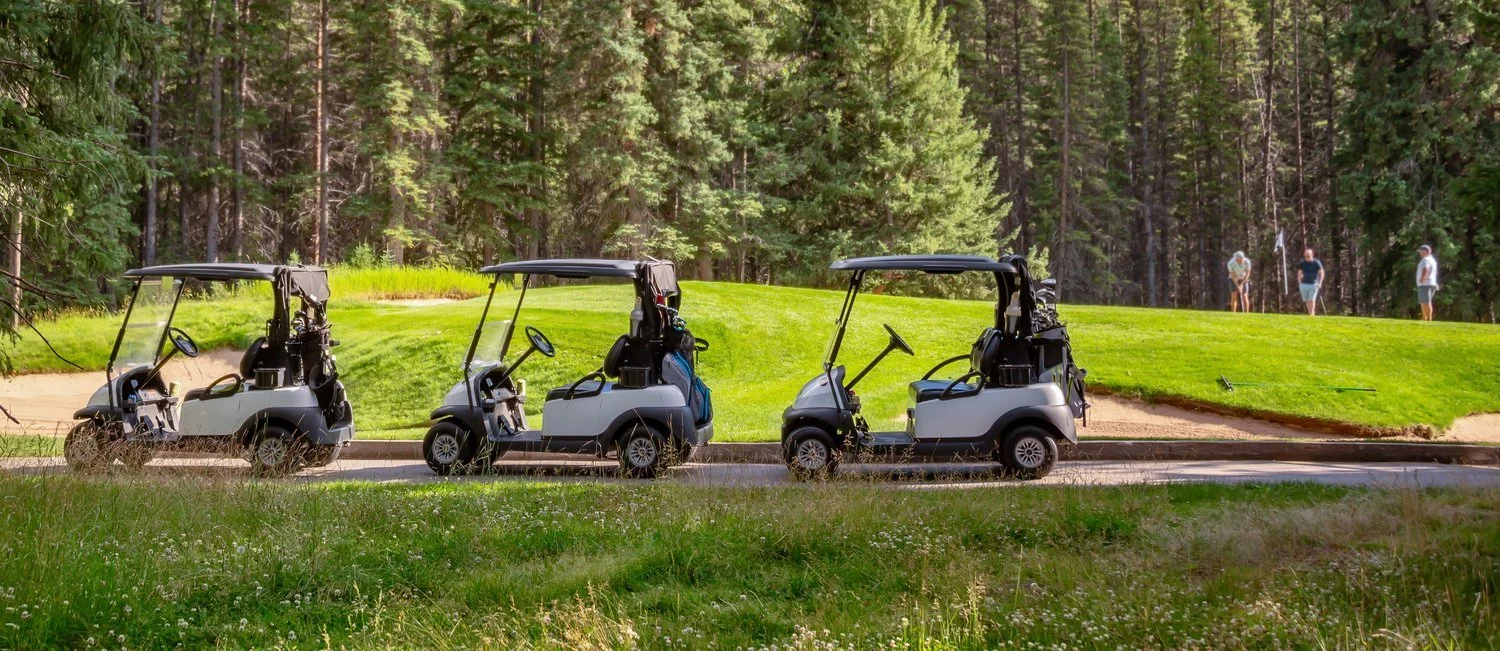GolfStatus’ on-staff PGA Professionals—Cash Dinkel, PGA; Jason Meininger, PGA; and Paul Murcek, PGA—continue to share their insights and experiences in this ongoing PGA Q&A blog series. They’re back for another installment, this time talking about a popular revenue enhancer at charity golf tournaments—on-course games.
Q: We want to have games on some of the tournament holes. How many is too many? How many do you recommend?
Cash Dinkel: I would say keep it to six or fewer. Four is a great sweet spot. You don’t want to have too many games that it impacts the pace of play too much, but games can be a great way to earn some extra money from golfers.
Paul Murcek: I wouldn’t recommend doing more than six, especially if the games will slow down the tournament’s pace of play.
Jason Meininger: I would say between three and six games is about right. If you have too many, it will slow down the pace of play, and no one likes getting stuck waiting at a hole.
Q: What are some of the best on-course games you’ve seen at charity golf tournaments? What made them great?
Jason Meininger: A few I’ve seen work well at charity tournaments:
Beat the Pro. On a par three hole, a Pro (could be the course’s golf pro, a professional golf entertainer, or other person) hits a shot and golfers pay to hit the same shot. They win a prize if their shot is closer to the hole. Golfers feel great if they can beat the pro!
Air cannon. Golfers pay $20 (or other amount) to shoot the air cannon as their tee shot. This is really popular—it’s fun to shoot the cannon.
Chip into a small pool. Golfers pay to hit a chip shot to land in the pool to win a prize.
Cash Dinkel:
Use the Pro’s shot. Each team pays $20 or so and gets to hit their next shot from where the Pro hits their shot. This is very popular on par threes and par fives if the Pro hits the ball a long way.
Closest to the pin, long drive, or longest putt contests. Sell a sponsorship to pay for the cost of the prize (and a little extra revenue), and the winners get golf shop credit or another prize.
Beat the Pro. Another variation on what Jason mentioned is that each team pays $100 to go against the pro. If the team is closer than the pro on the tee shot, the team gets a one on that hole; if not, the hole is played normally. Another option is to give additional raffle tickets to teams who win.
50/50 putting contest. Set up a medium difficulty putt, maybe 20 to 30 feet. Golfers pay $20 per attempt with unlimited attempts. Everyone who makes the medium difficulty putt then gets to attempt a very difficult putt of 40 to 50 feet. If a golfer makes the difficult putt, they split half the entry fees with the host organization.
Habitat for Humanity of Columbus, Nebraska features a putting contest at their annual golf fundraiser, in which golfers use various building tools (two by fours, levels, sledgehammers, etc.) to putt.
Q: How about the worst on-course games? Why were they the worst?
Paul Murcek: Any game games where there’s too much time between golf shots. An example is where a golfer has to spin around and make themselves dizzy before hitting a golf shot. Although it is funny, it slows down play, and in the end, slow play is the biggest killer of repeat golfers and sponsors at a golf event.
Cash Dinkel: The String Game. No one wants to hold onto and cut a string throughout the day. Most people don’t grasp the game, and a lot of teams use it differently, making it not ideal.
Q: How do we maintain the pace of play with on-course games?
Jason Meininger: Bottom line—don’t overdo the games, or it will slow down the pace of play.
Cash Dinkel: Make them simple and easy to understand, and don’t do more than six. Games that are a part of normal play (like tee shots or putts) mean it won’t take more time than needed to play the hole.
Paul Murcek: I echo what Cash said about having games or contests that are part of normal play, like closest to the pin, beat the pro on a par three, or longest drive, to not affect the pace of play. Utilize volunteers who understand golf and suggest a window of no more than 15 minutes for a team to play a hole to keep a brisk pace of play (15 minutes per hole on an 18-hole golf course means a round of about four hours and 30 minutes).
When done properly, on-course games won’t slow down the tournament’s pace of play.
Q: Will golf course staff help run on-course games, or do I need volunteers?
Cash Dinkel: More often than not, your team will be tasked with staffing those contests. It’s a question to ask the golf facility, but I wouldn’t expect them to do that. They can usually assist you with setup.
Paul Murcek: You will definitely need volunteers or staff members from your organization. In my experience, golf course staff won’t help with on-course games in most cases.
Jason Meininger: Course staff will usually not run the games for you, so getting volunteers is the best option.
Q: Do golf facilities generally have any restrictions on the on-course games allowed? If so, what are they, and how can we work with the facility to make everyone happy?
Cash Dinkel: I’ve never heard of a golf course limiting on-course games. If there are concerns about pace of play or the need to protect the integrity of the course, they may say no to some on-course games. So make a point to communicate with the course what your plans are for games and contests, so there are no surprises on the day of the event.
Paul Murcek: Not to my knowledge, but every golf facility is different and may have different rules. Ask the pro if they have games that are not allowed.
Jason Meininger: I have never heard of a course restricting the number of on-course games, but like the other two said, be sure to talk with the golf staff to be sure.
Ask & Work With the Golf Fundraising Pros!
If you have a question for GolfStatus’ PGA Professionals, send it in an email to [email protected] with “PGA Pro Question” in the subject line!
Nonprofits, charities, and third parties holding golf events to benefit one can qualify to use GolfStatus’ tournament management software at no upfront cost. Our in-house team of golf fundraising experts, including PGA Professionals and Fundraising Specialists, is here to help save you time and raise the most money possible. Get started with GolfStatus by booking a meeting with our team—click below!































